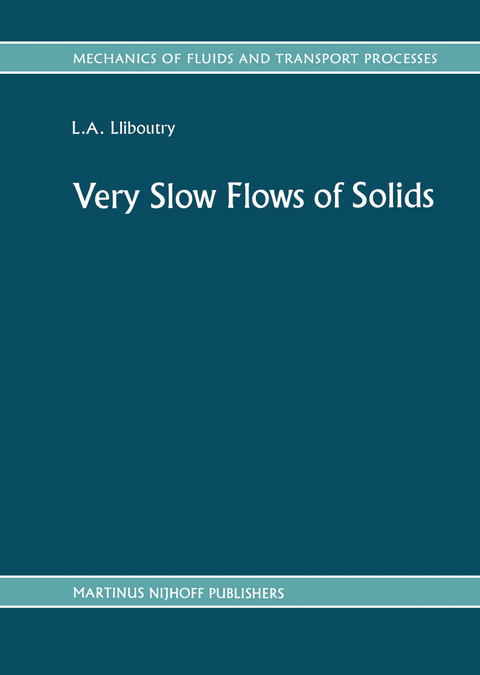
Very Slow Flows of Solids
Kluwer Academic Publishers (Verlag)
9789024734825 (ISBN)
1 Numerical simulation of very slow flows: an overview.- 2 Diffusion and advection of heat with a single space variable.- 3 Rotation and strain. Invariants of stress and of strain rates.- 4 Microscopic processes of creep.- 5 Viscosity as a model for rocks creeping at high temperature.- 6 Stokes’ problems solved with Fourier transforms: isostatic rebound, glacier sliding.- 7 Open flow in a cylindrical channel of a power-law viscous fluid, and application to temperate valley glaciers.- 8 Coupled velocity and temperature fields: the ice-sheet problem.- 9 Thermal convection in an isoviscous layer and in the Earth’s mantle.- 10 Computation of very slow flows by the finite-difference method.- 11 Elasto-statics.- 12 Plates and layered media.- 13 Variational theorems, and the Finite Element Method.- 14 The rigid plastic model.- 15 Viscoelasticity and transient creep.- 16 Homogenization, and the transversely isotropic power-law viscous body.- Appendix I Some important numerical methods.- Appendix II Vector analysis.- Appendix III Cylindrical and spherical coordinates.- Appendix IV Fourier and Fourier-Bessel transforms.- Appendix V Spherical harmonics and the gravity field.- Name index.
| Erscheint lt. Verlag | 30.6.1987 |
|---|---|
| Reihe/Serie | Mechanics of Fluids and Transport Processes ; 7 |
| Zusatzinfo | XX, 510 p. |
| Verlagsort | Dordrecht |
| Sprache | englisch |
| Maße | 155 x 235 mm |
| Themenwelt | Naturwissenschaften ► Biologie ► Ökologie / Naturschutz |
| Naturwissenschaften ► Geowissenschaften ► Geologie | |
| Naturwissenschaften ► Geowissenschaften ► Geophysik | |
| Naturwissenschaften ► Geowissenschaften ► Hydrologie / Ozeanografie | |
| Naturwissenschaften ► Physik / Astronomie ► Mechanik | |
| ISBN-13 | 9789024734825 / 9789024734825 |
| Zustand | Neuware |
| Informationen gemäß Produktsicherheitsverordnung (GPSR) | |
| Haben Sie eine Frage zum Produkt? |
aus dem Bereich


